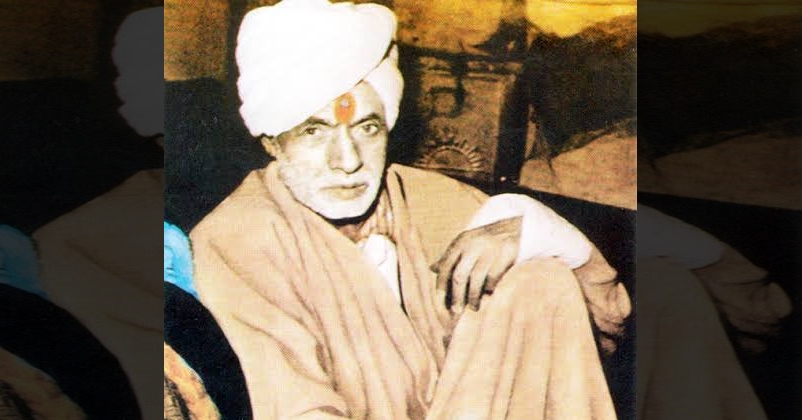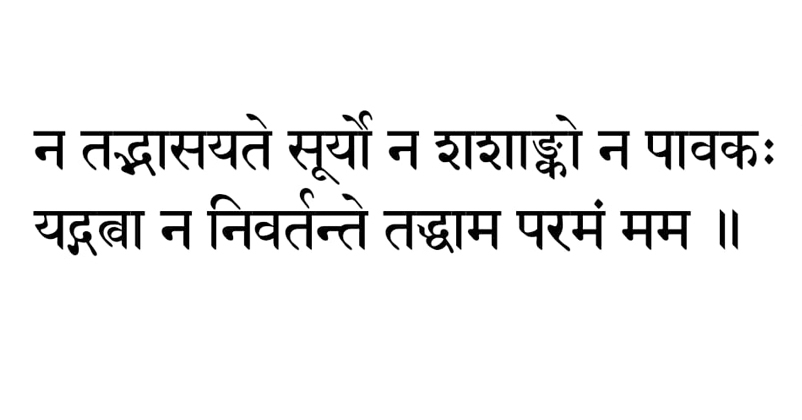BHAGWAN GOPINATH- KARAMYOGI OF KASHMIR
| 14-Nov-2019 |

ChiranjeeviKarnail
Shrimad-Bhagvadgitatells us what is life and also explains different paths to live it. The holy book tells us about the concept of Karamyog, the method to reach spiritual liberation by rightful actions. History has seen many Karamyogis, some are well known while some are still unknown to the world. One such Karamyogi was BhagwanGopinath from Kashmir.
EARLY LIFE
Born as GopinathBhan, BhagwanGopinath was born in a Kashmiri Pandit family, in a locality called BhanMohalla, in the city of Srinagar in Kashmir on Friday 3 July 1898. His father was a businessman. He completed his education till middle grade and had attained mastery over different languages including Sanskrit, Urdu and Persian as well. Gopinathji lost his mother when he was about 12 years and his father died when he was about 30. He used to go to sacred places like kheer bhawani and Vicharnaag. Though he often visited Swami ZankaakTufchi but it is not known who was his Guru. Some say it was his father, some claim that saint SwaamiBaalakJoo Kaw was his spiritual mentor.
STARTING WITH SPIRITUALITY
In his early life, he would recite the sacred Hindu hymns like BhavaniSahasranama, IndrakashiStrotam, Panchastavi, Vishnu Sahastranam, Shiv MahimnaStrotam, Shivastrotavali, Guru Gita and vaaks composed by some saints. He had great interest in Shrimad-Bhagvadgitaand had kept a copy of the book close to where he would sit for his meditation right till his last day. He had memorised all these texts probably in his early life. His spiritual jorney had many phases. In his younger years, Bhagwanji would devote much of his time attending bhajanmandalis, whereVaaks, Guru Gita and glories of God were recited. He would also attend religious plays and satsangs discussing spiritual topics. From the age of 22 years, he is said to have started the daily practice Parikrama of the shrine of Hari Parbat in Srinagar. He was often found meditating at the shrine courtyard while smoking his chillum. He is said to have had a vision of the deity of the shrine of Hari Parbat, Mata SharikaBhawani, at the age of 25. Hereafter, he is believed to have gradually veered towards the practice of meditating on God without a form or Nirgun Bhakti.
BECOMING SIDDHA PURUSHA
He now started practicing sense control. He used to be isolated and did not allow people in his room. Some religious writers think he might have practised some form of tantric spiritual practice like pranabhasya during this time. After seven such years of his spiritual practice, his devotees affirm that he had become, what they call in Hinduism, a siddha purushaas it was right after this period that people started visiting him to get their problems solved.
HELPING OTHERS
Later in his life, he was found talking to and directing invisible people at times. He spiritually initiated a Sikh disciple who had come to see him from some other state and lived at his home for 3 months. He also initiated PanditMaheshwarNathZutshi of Mallaporelocalityby offering him his pipe. It was also during this time that majority of his miracles were recorded and people started coming to him, seeking solutions to their worldly problems. It was sometime during the period between 1946–56 that he came to be called as Bhagwan by his devotees. He regularly visited the shrines of the deities of Mata SharikaBhagwati and Mata RagnyaBhawani during this period. Some of the other shrines visited by him were JwalaJi at Khrew, Bhadrakali at Handwara, JyesthaBhagwati at Srinagar, Gupt Ganga near NishatBagh, TushkarajaBhairav at Srinagar and Amarnath.
LAST DAYS
Bhagwanji used to solve the problems of the devotees. On 28 May 1968, throughout the day, many people had come to visit him. Later in the noon, some sadhus too had come to visit him. He used to give alms to these visiting sadhus who, on their journey to Amarnath shrine, would stop-over at his place. On this day too, he gave these sadhus whatever money he had in his cloth purse. He is then said to have gone into a state of samadhi till about 5:30 pm when he asked for some water and was helped to drink a tumbler full of sweet water. He died at about 5:45 pm and his recorded last words were Om NamahShivaya.On his death, Swami NandLal, is said to have remarked that Kashmir was being rocked by an earthquake. He is also said to have predicted Bhagwan Gopinath's death a week in advance.
LESSONS
Gopinathji taught many lessons to people. He told about the importance of honesty and purity in thought, word and action and explained the importance of charity. He also told that how lust and ego are the enemies of spiritual development and humanity. Apart from the miracles he did, his teachings all still preached and practicesd. Today’s society needs to understand and recall what our saints and philosophers taught us. Virtue and values must not be degraded in order to satisfy greed. As an Aghoreshwar and Jivanmukta, his whole life is a lesson for us.In his own words, when enquired about his spiritual state by a saint from Banaras who had come to visit him in May 1957, he is known to have recited the 6th verse from chapter-15 of Bhagavad Gita, which reads as follows:

and translates as "neither the sun illumines it, nor the moon, nor the fire. That is my prime abode, where having reached, one does not return". Some of his devotees believe him to be one of the Saptarishis. He is known to have sent one of his devotees, Mr. Zadoo, to convey greetings to the Saptarishi cluster of rocks on the hillside of Hari Parbat. Other scholars have compared his spiritual stature to Ramana Maharshi, Ramakrishna Paramahansa and AurbindoGhosh.
Mr. S N Fotedar in his biography of Gopinathji states that:
Though BhagwaanGopiNathji never moved out of the Kashmir Valley,he was well-known amongst the numerous sadhus who came to Kashmir from the remote corners of India and who even now remember him as a unique siddha and avadhoota, a realized soul and man of great compassion. They miss his physical presence even now. They say that in India such unique saints, who remain absorbed in the Brahma Swarupa all the twenty-four hours of a day, are rare to find.